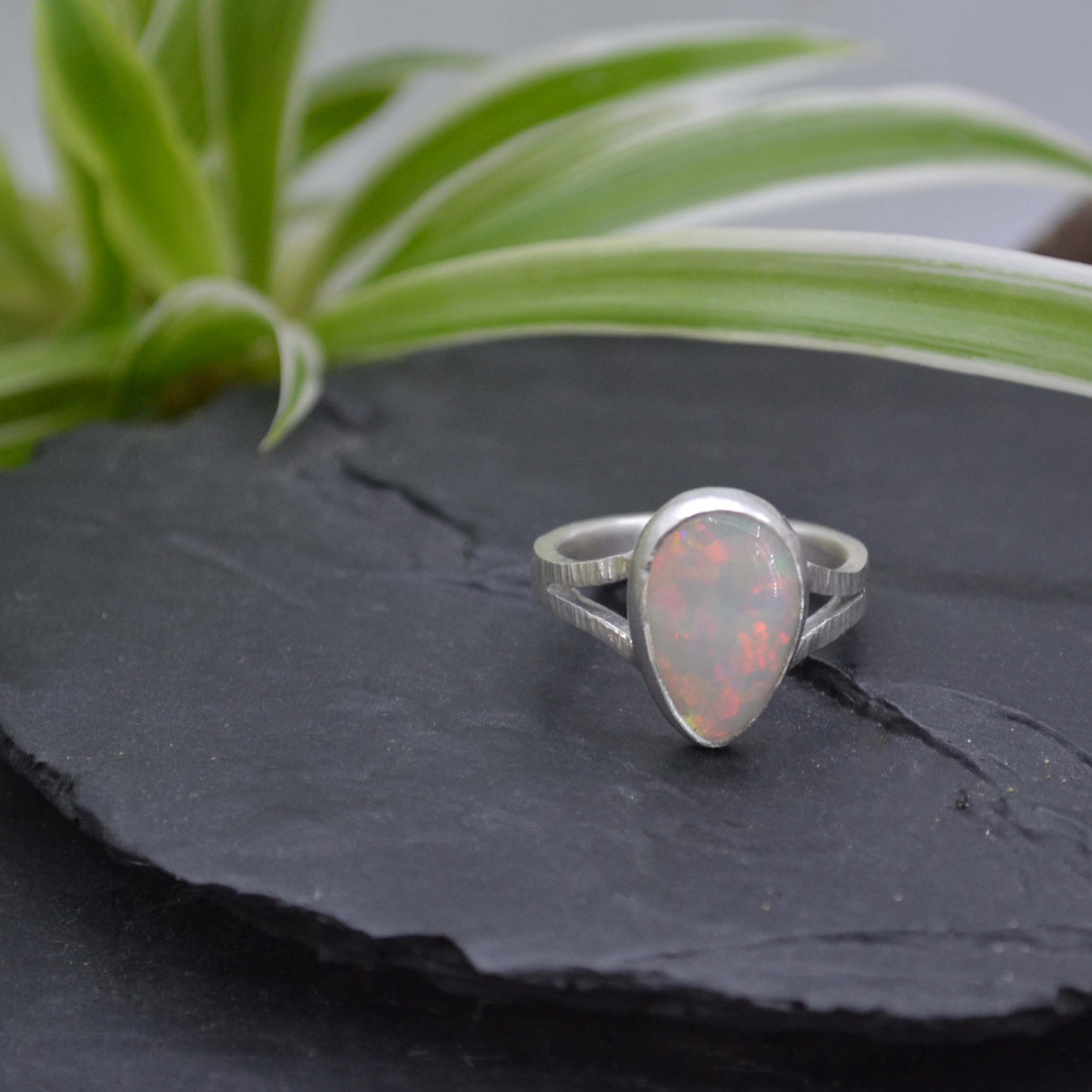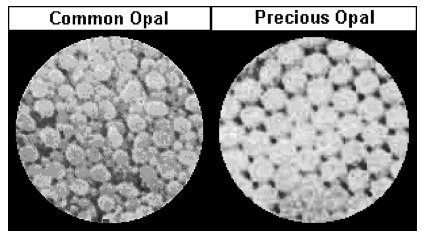‘Mysterious opals contain the wonders of the skies – sparkling rainbows, fireworks, and lightning, shifting and moving in their depths.’ – Author Unknown

Birthstone of October and gemstone of the 14th wedding anniversary, Opals have been treasured for their amazing play of colour for centuries. They are in fact so unique that a completely unique vocabulary has been built around them. But did you ever wonder how they formed or what causes the play of colour in some of the most precious of opals?
Opal Facts:
To be honest the opal is one of the least understood gemstones in terms of the way it forms. Opals unlike most other gemstones are not formed as crystals, which can be cut and faceted. You will notice that most opals are cabochon or rounded and polished. Opal is formed when silica-rich water seeps into a cavity and solidifies into perfect spheres as the water evaporates.
When viewed under an electron microscope, the structure of opal has been shown to be thousands of tightly packed little spheres. Think of stacking marbles. The more perfectly uniform the marbles the more perfectly packed they will be and the more play of colour will be seen.

Opal can be found in a several countries but the most well know opals hail from Australia where growing conditions over millions of years were perfect. More recently precious opal has been found in Ethiopia with the Welo region producing some of their finest opals.
The two main types of opal are Common and precious. Common opals generally don’t have the play of colour found in precious opal and will often be a milky white with some pale colour. Precious opals, on the other hand generally fall into one of three categories, White, Grey and Black. With the the colours referring to the main body colour of the opal.
You may also com across Boulder Opal or Fire Opal. Boulder opal is opal that has been cut and polished with the ironstone or sandstone matrix that it grew in still attached. Often this is because the opal cannot be cut away from the boulder without damaging the opal. Fire opal often does not have the same play of colour as other precious opal, however it will feature in brilliant hues of red and orange.
Care:
Opals are a very soft gemstone, sitting at 5-6.5 on the Moh’s scale which means they are highly susceptible to scratching. In fact, most household dust can scratch an opal. Thus they should always be set in protective settings such as bezels rather than claws which might put undue stress on the opal and cause it to shatter. Ideally opals are best suited to earrings and pendants where they are less likely to sustain knocks and scratches. But they are lovely in rings provided the setting is protective.
The other quite unique characteristic of opal is its high water content which can range from 6% – 20%. This can cause a few problems. Some opals will “craze” as the water content in them evaporates. While it can look attractive it also means the opal is fragile. You can see an example of that in the main photo. The orange fire opals are crazed.
The other phenomenon is that some opals are exceptionally porous which makes them hydrophanous. Meaning they will absorb water. When this happens they will often lose their play of colour until the excess water dries out (hopefully). Thus it is extremely important to take your opals off before washing dishes, swimming, showering etc.
The general rule of thumb is to put your opals on last when you are getting ready and take them off before you do anything that will damage them. In terms of cleaning them, use a soft cloth and if you know the opal is not hydrophanous, then a bit of warm soapy water and a soft brush is fine. You should also store your opals separately from other gemstones so they don’t get scratched.
Value
In general, the most valuable opals are black opals as they tend to be the most rare. However the play of colour an opal demonstrates is one of its defining characteristics and the more the play of colour the more valuable.
Opals can be found in doublets and triplets as well. A doublet is a very thin slice of opal attached to a backing usually black. A triplet similarly is a very thin slice of opal attached to a backing and sandwiched with, usually, a cabochon of quartz crystal. A triplet offers extra protection for an opal and can be ideal in a ring. Detecting a triplet is quite easy as the stone viewed from the side will be clear and not display colour. Both of these are broadly accepted in the gem industry provided it is disclosed. Needless to say they are very affordable as well.
Opals are usually graded into Commercial, Good, Fine and Extra Fine. Anything below Commercial is considered potch, or waste opal.
Commercial:
- some colour, usually in blues and greens
- Uneven cutting
- May have some foreign material attached like sand, visibly included
Fine:
- Multiple colors, very bright
- Good to excellent
- No eye visible inclusions to the surface
Good:
- Multiple colors, bright
- Good to excellent even cutting
- May have some minor inclusions or sand to the surface, visible with naked eye
Extra Fine:
- All colors, brilliant
- Good to excellent
- No inclusions seen with 10X magnification
Opal prices vary considerably depending on the type and grade of the opal. They can be as low as $20 per carat for Commercial Grade Boulder Opal up to $30,000 per carat for Extra Fine Black Opal. If you are shopping for Opal, set your budget then find something that you like. Ideally buy from someone reputable and if you are investing quite a sum, it’s always worth a second opinion.

So there you have it, a little bit about opals. If you’d like more information just drop me a note below. Thanks for reading!